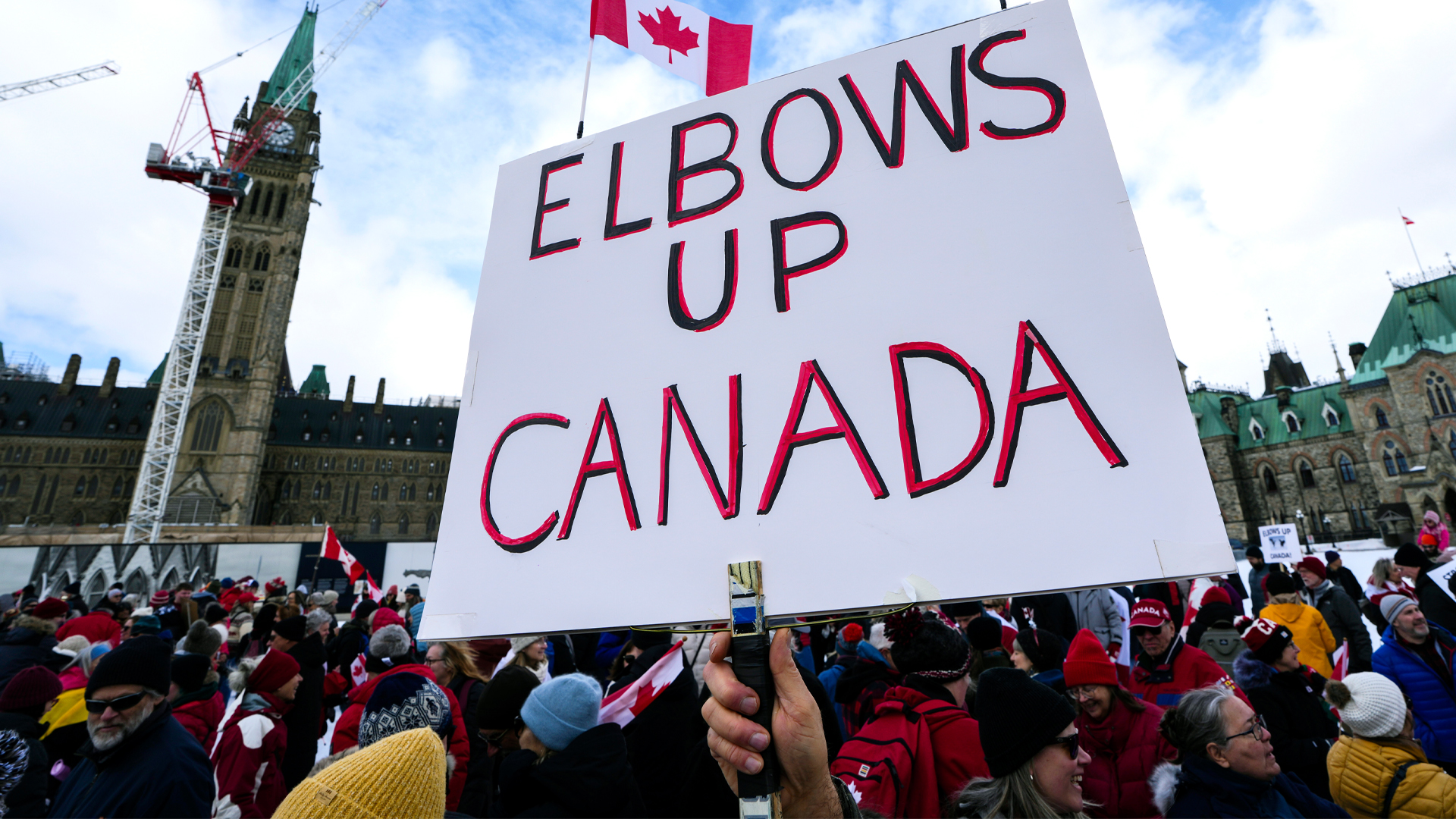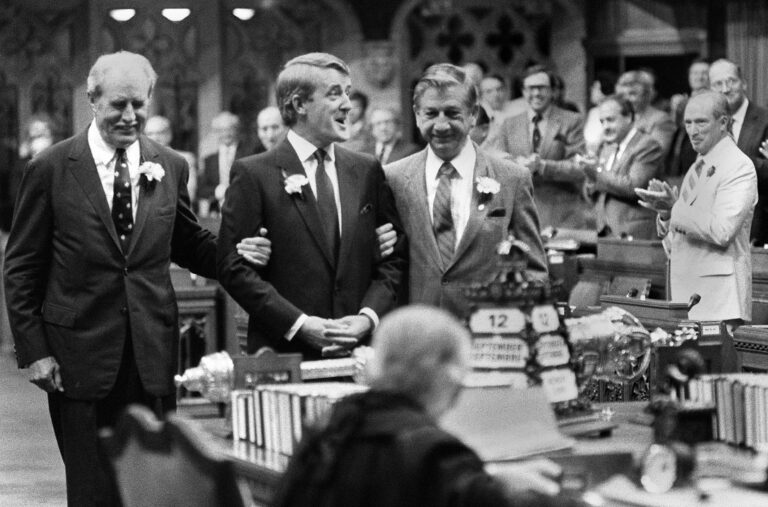Sign up for A Stronger Canada for The Trump Era. A temporary newsletter with the latest Canada-U.S. analyses from Policy Options.
OTTAWA – Canada’s public service has never been bigger. And the calls to shrink it have never been louder. But how and when does the next government cut public-service spending with a U.S. president who keeps shifting the goalposts of his economic warfare against Canada?
Cutting spending and jobs is never easy – it eats up time and energy, triggers union battles, and disrupts departments. Buyouts and severance cost money, and deeper cuts inevitably hit services, including Canada’s critical social safety net.
Some critics blame Canada’s productivity decline on public-sector growth. The public sector for all levels of government now makes up nearly 40 per cent of GDP. Productivity has steadily fallen as the public sector has expanded, the International Monetary Fund notes, fueling debate over its role in the slowdown.
The federal workforce has grown faster than ever in the last decade, up 43 per cent to a record high. Its payroll topped $65 billion in 2023-24. The average full-time employee now costs $136,345. That is up 15.7 per cent from the previous year.
That’s a tempting target for any government looking to rein in spending.
Parliamentary Budget Officer Yves Giroux says the government is caught in a fiscal squeeze.
It’s facing a $50.1-billion deficit. Tariffs alone will reduce the GDP by two per cent, which reduces tax revenues. The government has promised to help people and industries hit by the tariffs. NATO’s defense-spending target is two per cent of GDP but is set to rise higher.
Add in campaign pledges, talk of major infrastructure projects – from rail and pipelines to military upgrades for promised nation-building, and the next government has some big budget tradeoffs to make over the next five to 10 years.
Giroux says a wildcard like Donald Trump – with his constantly shifting trade threats – “throws a monkey’s wrench into any party’s fiscal tracks.” With Canada-U.S. relations in historic flux, a key factor in the country’s financial outlook keeps changing, making it tough to stick to targets, election promises or set a stable fiscal path.
With all the uncertainty and spending pressures, the math simply won’t add up without public-service cuts, says Sahir Khan, vice president of the Institute of Fiscal Studies and Democracy at the University of Ottawa.
Whether the next government reshuffles spending to fund new priorities or cuts it to shrink the deficit, public servants can’t escape the knife.
But Khan says major cuts – or any big fiscal decisions – are unlikely for now because the landscape is too uncertain. The government needs a clearer picture of whether Trump’s tariffs and policies are here to stay before setting priorities. Until the goalposts stop shifting, committing to a long-term fiscal plan is tough.
“We are in a vacuum right now. I stand by the statement that a $65-billion payroll is going to be attractive, but the problems are so much bigger than that. You have to solve for the policy requirement first before you get at the size of your payroll,” he says.
It’s not just about jobs. There’s a social and economic value to programs and services. They complement what the private sector does. They fill the gaps left by the private sector, like spending for the military, national security and border control.
The biggest federal union, the Public Service Alliance of Canada (PSAC), is tapping into the wave of national unity ignited by Trump’s trade shocks, launching a “For You, Canada” campaign to save public services from cuts.
“When the world feels uncertain – with reckless tariffs putting our jobs at risk and our very sovereignty under attack – you can count on Canada’s public service to be there when people need them most,” says PSAC President Sharon DeSousa.
Jennifer Robson, an associate professor in political management at Carleton University, says it’s “kind of dumb” to obsess over the headcount of the public service. What’s important is the function, what it’s doing and the problems it solves.
As a result, the calls for a spending review have never been stronger.
A big push is for one modelled on the Chrétien government’s “getting government right” program review in the mid-1990s. It looked at the role of government with an eye on what programs to keep and what to stop doing, eliminating the deficit and cutting 50,000 jobs.
Cuts shouldn’t drive the agenda, says Khan. The size of government should be based on policy goals, budget realities, and the capacity of the public service to deliver services effectively. That also means fixing the way the public service works and manages.
The real test for the next government will be whether the public service has the delivery capacity to match the crisis and the government’s response, says Khan. Without that, policy and fiscal decisions have “no transmission mechanism,” no way to turn plans into results.
But it will be a policy choice, says Giroux.
“An incoming government that wants to have different priorities may just want to reallocate. But if they want to find savings within the public service, then they’ll probably have to do some surgical cuts, at least, maybe deeper cuts,” says Giroux.
Neither Prime Minister Mark Carney nor Conservative leader Pierre Poilievre has fleshed out their policies, but there are signs of divergence.
Carney has promised to rein in spending by balancing the government’s operating budget – which includes the $65 billion payroll – in three years, while running a small deficit with a capital budget, which would include long-term investments.
He’s talked about a spending review and using technology and AI to make operations more efficient. But he says he will cap the public service while Poilievre says it will be cut at least at the rate of attrition.
It’s unclear whether Carney means the size of the public service or its payroll costs when he talks about a cap. The public service now has 441,000 people. Payroll costs will grow with annual pay increases. Capping $65-billion payroll costs would decrease spending as inflation eats away at it.
Carney promises a very different government | The Functionary
But Alasdair Roberts, who predicted Canada’s sovereignty crisis in his book The Adaptable Country says Trump’s tariff and annexation threats are just the beginning. Canada will face bigger geopolitical and economic shocks in the coming decades.
“This isn’t the whole story. This isn’t the shock. This is only one of the shocks,” he warns.
As much as the world has changed, politics remains the same, reactive and driven by events, says Roberts. He has long argued Canada needs a “national conversation” about what it wants to be and how to get there. He’s a strong advocate for royal commissions.
But he fears the election will push parties into quick fixes and short-term platforms, locking the country into policy priorities without a long-term strategy. That would also sideline the public service, which brings continuity, institutional memory, and non-partisanship – critical for preparing for the next crisis.
He supports a 1990s-style program review but warns the public service faces “deferred maintenance” and needs major reforms in how it operates and manages itself.
And he warns that Canadians’ unity – their resolve to fight Trump and build a more independent country – will weaken if the economy slows or enters a recession. Politics will turn nastier, internal divisions will deepen.
Add to that climate emergencies, the possibility of war, and the fact that Canada, home to just 40 million people, holds a disproportionate share of the world’s fresh water, critical minerals, and habitable land. That makes it a target.
“The question will be: why does Canada have all this stuff?” Roberts says. “That’s essentially what President Trump is asking. We shouldn’t expect international law or diplomatic norms to stop powerful countries – even those we thought were our friends – from doing what they think is necessary to preserve their country.”
This article was produced with support from the Accenture Fellowship on the Future of the Public Service. Read more of Kathryn’s articles.











